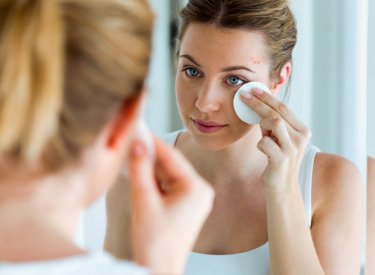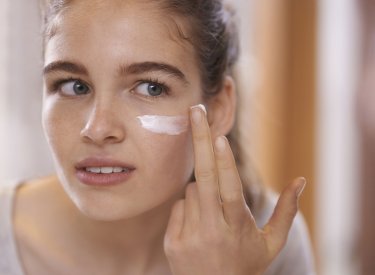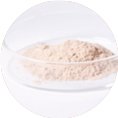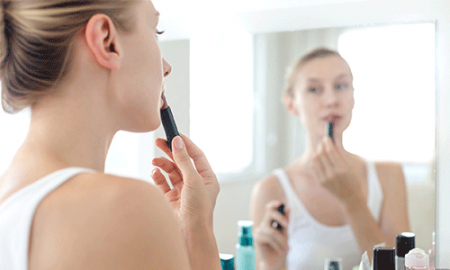Good habits for people with combination to oily skin
Constantly powdering your nose may look delightful in old films, but it's not so much fun in real life. Skin that always starts to shine just when you don’t want it to can become a real obsession.

Constantly powdering your nose may look delightful in old films, but it's not so much fun in real life. Skin that always starts to shine just when you don’t want it to can become a real obsession.
The first piece of good news is that adopting good hygiene and skin care habits can really change things and tone down hyperseborrhoea. The second piece of good news is that special make-up tricks for oily skin actually work! Want to give it a go? Then read on.
Oily skin is often mistreated, and combination skin is often misunderstood. In the daily battle to get rid of the slightest trace of oil or shine, the weapons people use can be quite merciless. Yet combination to oily skin also needs a gentle touch.
If you frequently perform abrasive facial scrubs and deep cleansing routines using soap and alcohol-based lotions, your skin may well end up completely unbalanced. Adopt a simple skincare routine that respects your skin, using products that have been specially developed for its specific problems.
This basic advice applies to both men and women: cleanse your face every morning and evening with a micellar water for oily skin or a soap-free foaming gel.
If you have combination skin, don’t rinse with tap water, as it is often quite hard and dries out the skin. If you wear make-up, it is important to remove it all if you want to avoid cosmetics clogging the pores and triggering a flare-up of spots.

When you have oily skin, you often think it might not be a good idea to apply any creams, in case they make it shine even more. Wrong! Your oily skin can be dehydrated - but what it needs is water, not oil. It needs a moisturising liquid that exactly meets its requirements in terms of moisturisation, whilst at the same time helping improve its appearance with a mattifying effect. You can also get specific products to reduce the look of open pores.
Why not alternate to suit your skin’s needs? People with combination skin would do well to use two different creams, a sebo-regulating one for the T-zone and a richer one for the rest of the face. The idea is to never over treat the skin, but rather to meet its needs as precisely as possible by using suitable products.
Whatever the case may be, make sure you choose moisturising products bearing the words “non-comedogenic”, which means that they have been successfully tested to ensure that they do not cause blemishes to appear.

Once or twice a week is enough, even for oily skin. Acid or enzymatic exfoliants are gentler and so they are preferable to the mechanical action of scrubs that contain microbeads. Their keratolytic action improves the skin’s appearance and brightens your complexion.
Beware of folk remedies for oily skin - they might make things worse or even attack your skin. If you tend towards combination skin, don’t exfoliate too often or only exfoliate the oily areas. And remember to use a moisturising mask on drier areas.
The amount of sebum your skin produces is controlled by hormones, but it is also influenced by various aggravating factors. Once you know what they are, try to adapt your lifestyle so that you are impacting all the levers affecting combination to oily skin.
Clean skin doesn’t depend solely on what you do in the bathroom!

Diet
The dietary advice given to people with acne-prone skin is also perfect for anyone with oily skin. Avoid eating too many of the foods that promote sebum production. Sugar and foods with a high glycemic index, as well as dairy produce (apart from cheese), are not good for combination to oily skin.

Heat
Heat helps to increase sebum production. At the same time, when your skin is exposed to UVs, it thickens to protect itself. More sebum and problems evacuating it: everything you need to guarantee a nice outbreak of spots as soon as the skin thins down again, often at the end of the summer when you no longer spend so much time in the sun. Don’t be taken in by what looks like lovely summer skin, protect oily skin with a suitable sunscreen.

Stress
We now know that the skin and nervous system are closely linked. With oily skin, the stress hormone (cortisol) promotes sebum production, which in turn creates more stress and a vicious circle begins… Any strategy that helps you relax and manage your stress better is worth considering, from meditation to relaxation, breathing techniques (cardiac coherence exercises for instance) and those reinvigorating micro-naps…
With oily skin, make-up is for better or for worse…For better is when make-up is chosen carefully, is not used in excessive amounts, tones down shine and camouflages pores. For worse is when too many layers of make-up are used: primer + base + high coverage foundation + powder and more powder, all in highly compact versions that suffocate the skin. Your face no longer looks remotely natural and as far as radiance is concerned, forget it! People with combination to oily skin tend to rely entirely on foundation and tracking down every last little shiny patch. And if you have combination skin, you also have to deal with different levels of brightness and reaction in the various different areas of your face.
• A perfect complexion for oily skin
First and foremost, make sure you use a good make-up base. Otherwise your foundation won’t last all day. Ideally, find a moisturising cream for oily skin that will smooth and mattify your skin. Next, a liquid, oil-free, non-comedogenic foundation, applied in little dabs, just where it's needed, without creating any thick patches. Finish with some light, loose powder just on your nose, leaving the cheeks or the corners of the eyelids natural, for a more radiant effect. This is a great tip for days when your complexion looks dull.
• A perfect complexion for combination skin
Once again, the base is what counts, so use a transparent, moisturising, unifying product. Next, people with combination skin can choose between a BB Cream - a tinted cream, if there are no very visible blemishes, or a mineral foundation. Add an optional touch of loose powder on the nose.
